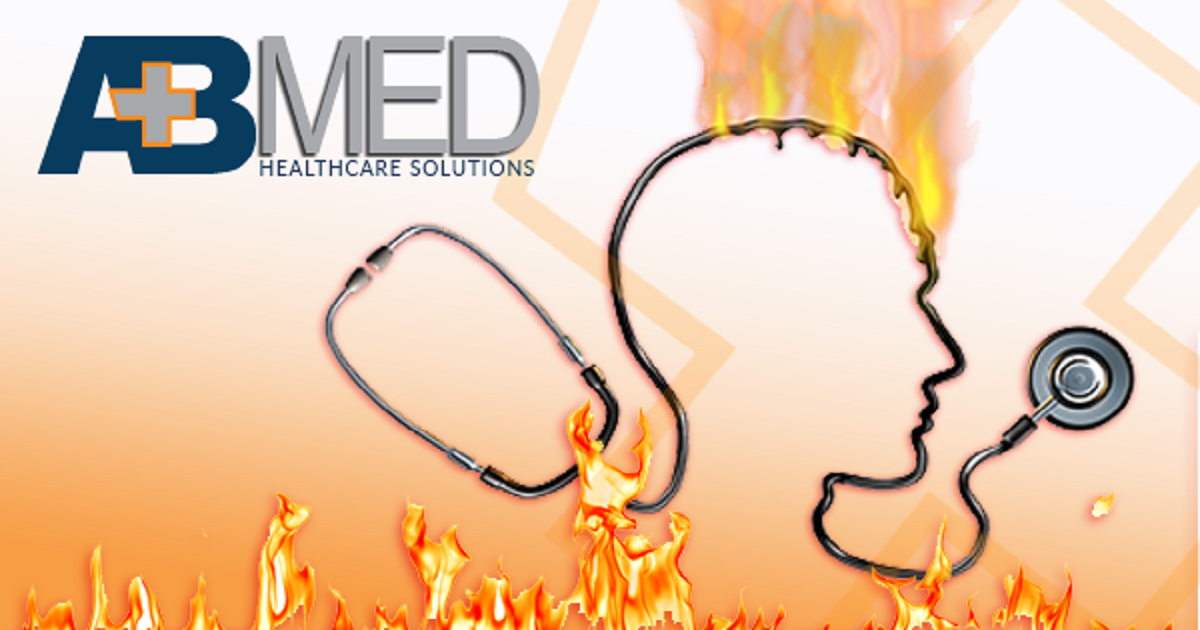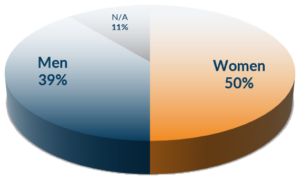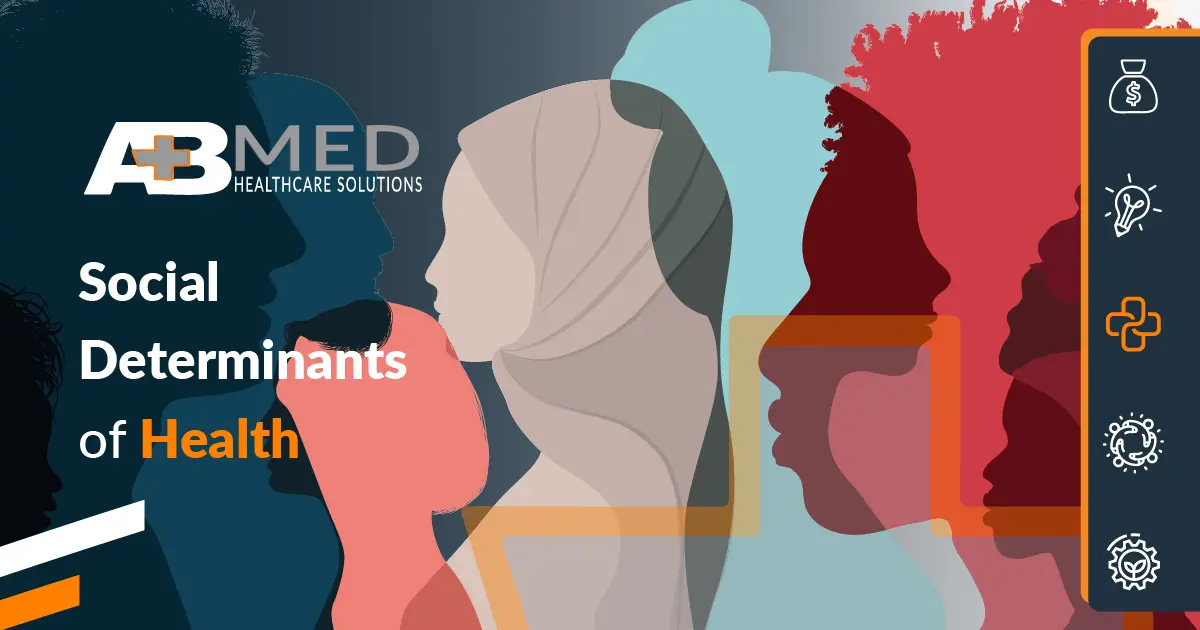The impact of burnout on physicians, patients and healthcare facilities
According to a study from Medscape, 42% of 15,000 physicians who participated in a recent survey responded that they felt burnt out. Experiencing burnout as a physician is becoming more commonplace than ever, leading to a potential epidemic in the workforce. Physician burnout can lead to severe long-term depression, anxiety, panic attacks, and in some cases when not addressed and treated properly, suicide. The impact of physician burnout extends not only to themselves, but to their patients and their healthcare facilities.
So does Physician Burnout Blister Your Facility?
What is Physician Burnout?
Experiencing burnout as a physician can result in feeling apathetic, despondent, or even bored with your line of work. Even if they have always had a passion for the medical field and working as a physician, it is still possible to experience burnout.
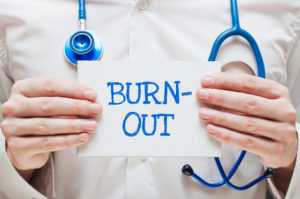
Some of the most common effects to manifest in physicians experiencing burnout include:
- Emotional and Physical Exhaustion: When you are experiencing burnout as a physician, you are much more likely to feel exhausted both mentally and physically, even if you and anxiety, which can also lead to lethargy and feeling extremely exhausted mentally.
- Loss of Purpose/Reduced Sense of Accomplishment: You may begin to feel as if your work is meaningless or futile when you begin experiencing burnout. Feeling a loss of purpose can also be a telltale sign that you are experiencing an episode of burnout.
- Depersonalization: If you find yourself feeling increasingly irritable and agitated towards patients, coworkers, and your position altogether, you may be struggling with burnout.
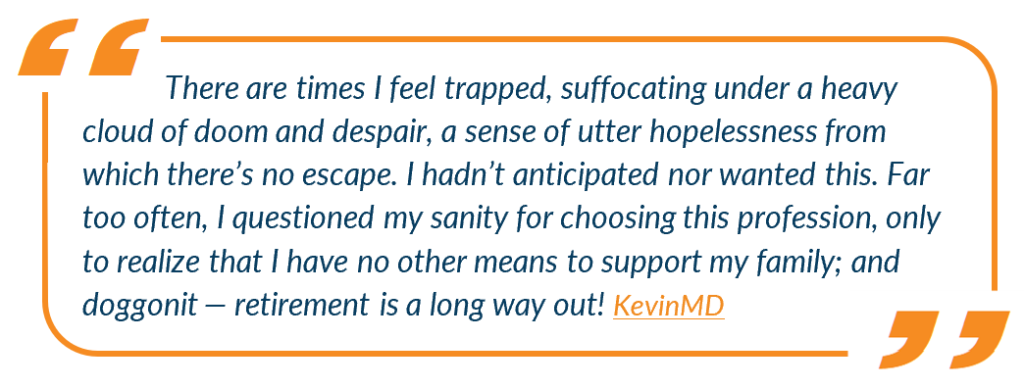
Who is at Risk?
Physicians show that they are at a much higher risk for emotional exhaustion (32.1%) versus individuals in alternate professions (23.5%). Additionally, physicians were also more likely to experience depersonalization (19.4%) as opposed to alternate professions (15%). Relative to population controls, burnout appears to be more prevalent (37.9%) throughout the workforce compared to all other careers (27.8%). Ultimately, physicians have a much higher risk of experiencing bouts and long-term burnout due to a demanding work environment and stress while caring for high-risk
When looking at a study of 3442 working adults in the US, physicians were more likely (37.9%) to exhibit symptoms of burnout as opposed to professionals in other industries (27.8%). Physicians also exhibit extreme dissatisfaction with their overall work-life balance. Approximately 40.2% of physicians feel dissatisfied with their work-life balance compared to those in other careers (23.2%). Physicians who work in rural areas are also affected by burnout. Rural facilities are often short-staffed, requiring from their physicians to work longer and more demanding workdays. patients each day.

Which Gender is Affected the Most?
Women physicians are affected more from burnout than men (50%vs 39%). Women are more open about disclosing, discussing and seeking help when it comes to emotional problems and that might lead to more women reporting the issue. Another consideration is that family and childcare responsibilities are mostly shouldered by women and that increases the workload compared to their male counterparts. Data from: Medscape National Physician Burnout, Depression & Suicide Report 2019
Which Specialties are Affected the Most?
According to the 2019 Medscape survey, more than 15,000 physicians from 29 specialists responded and the overall physician burnout rate was found to be at 44%.
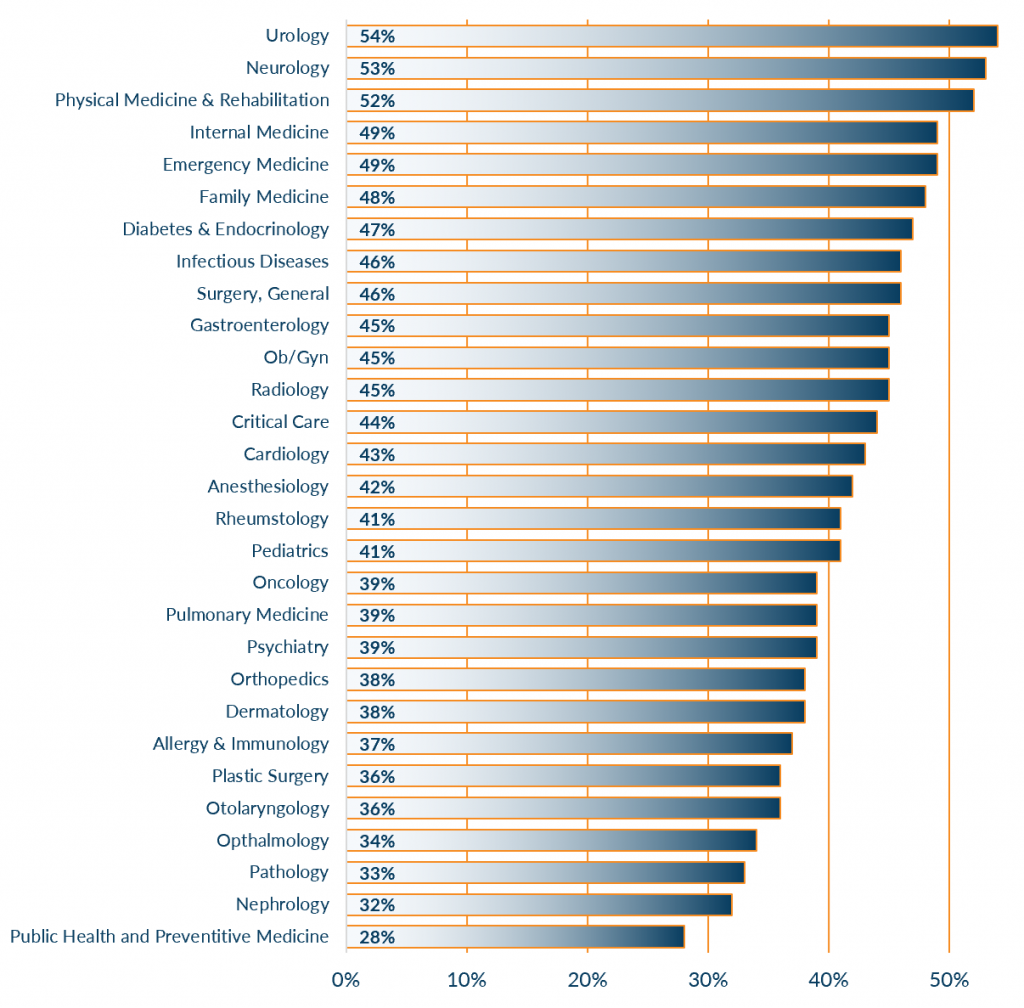
What Causes the Burnout?
According to Medscape, most doctors attribute their burnout to the increasing burden of bureaucratic tasks.
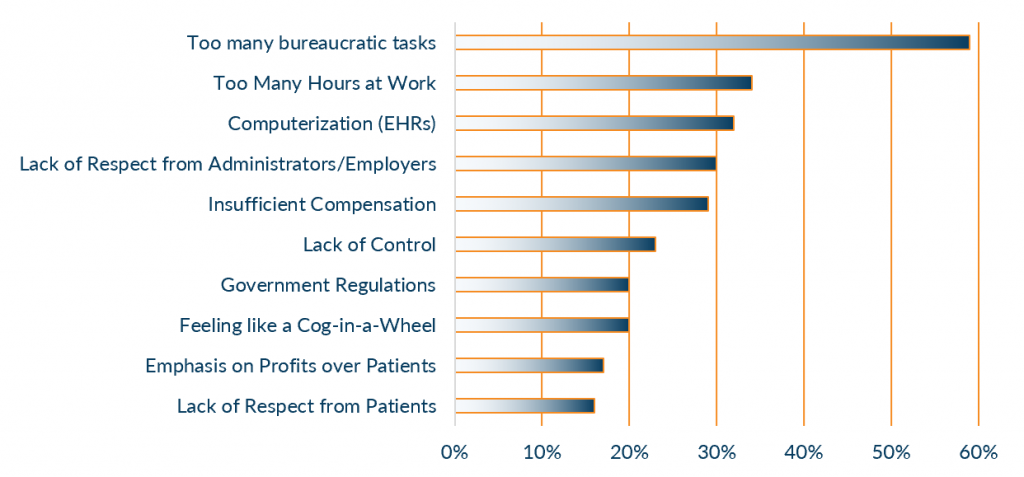
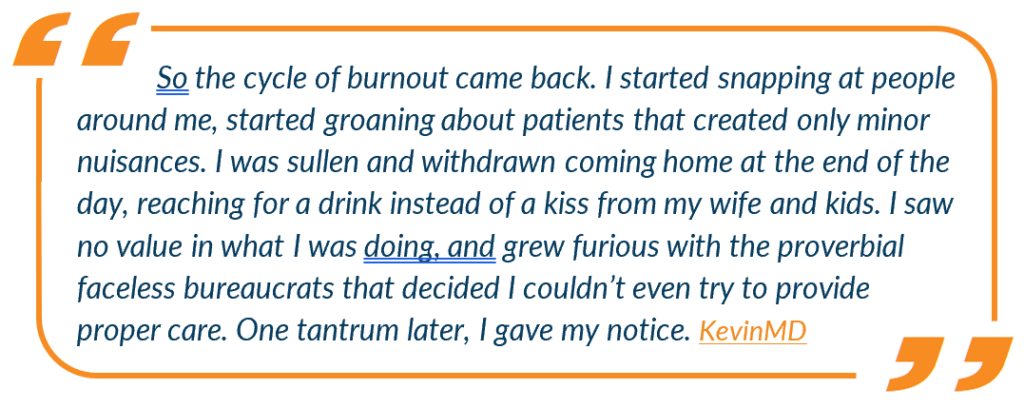
Feeling the Burn?
83% of respondents made up of clinicians, clinical leaders, and healthcare executives, openly call burnout a “serious” or “moderate” problem within their organizations. When burnout infiltrates a healthcare facility, there are extreme risks and potential consequences that can result in medical, legal, and financial liability.
The risks that burnout poses are felt whether you are a clinical leader, healthcare executive, or of you are a working physician yourself. Burnout is spreading like a wild fire from the effected physician to their immediate team, to the patients and finally the facility itself.
Burnout not only poses a direct threat to physicians experiencing it, but also to healthcare facilities and the overall wellbeing of patients.
Consequences of Burnout?
- Patient Care
- Healthcare Facilities
- Physician Health
Infographic Data from Wiley
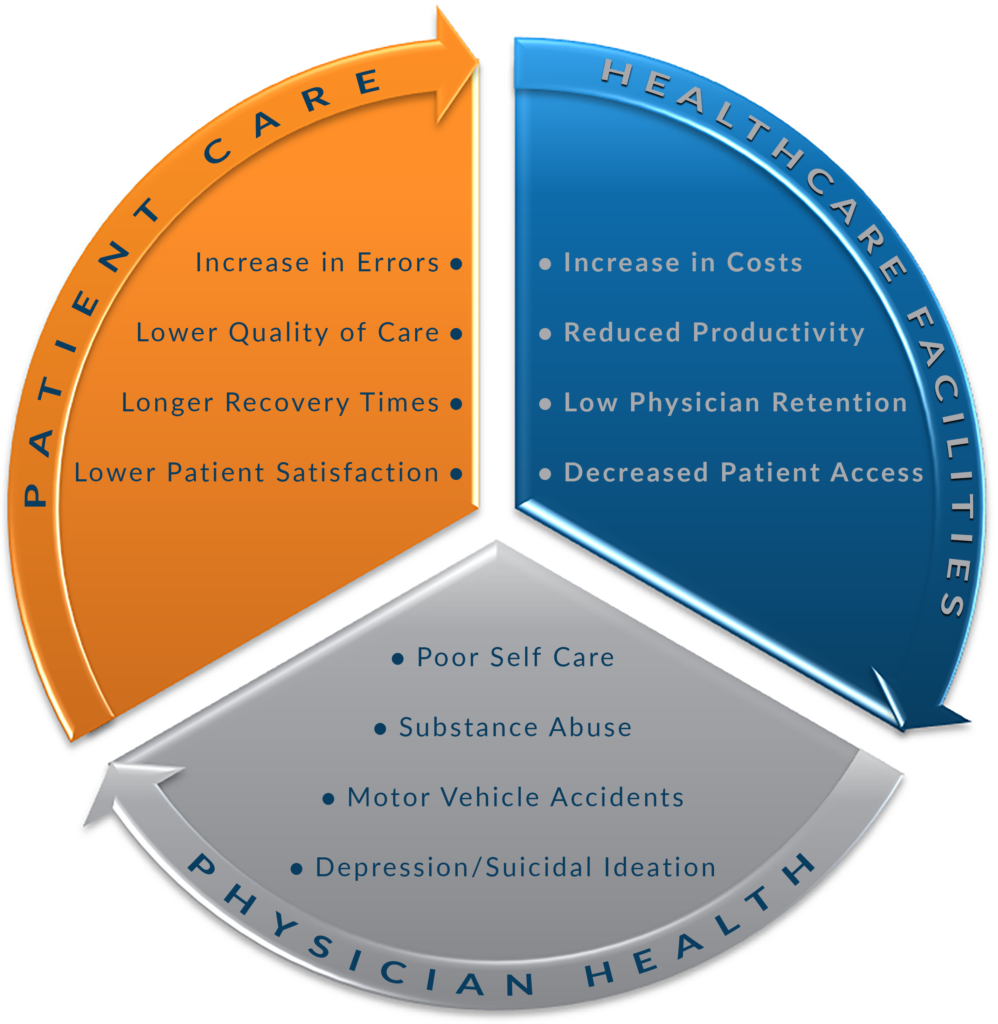
Consequences of Burnout – Patient Care
When medical professionals exhibit physical signs and symptoms of burnout, they are putting their patients at risk. Impaired judgment, increased agitation, and memory loss can all lead to compromised patient care.

Increase in Errors
Clinicians who are experiencing burnout are more likely to experience impaired cognitive and executive functions in addition to memory loss and impaired attention. Additionally, they are more likely to have difficulties paying attention to detail while expressing diminished vigilance while at work. When a physician experiences the severe physical signs and symptoms of physician burnout, they are much more likely to put a patient at risk for errors with increased safety lapses.
Lower Quality of Care
Burnout is directly linked to a lower quality of care throughout all healthcare facilities. Physicians who are experiencing burnout are less likely to remain tentative, caring, and thorough with each of the patients in their care.
Longer Recovery Times
Lower Patient Satisfaction
Consequences of Burnout – Healthcare Organizations
Healthcare facilities suffer many consequences from physician burnout. Some of the most notable effects a healthcare organization is likely to face when physicians are experiencing burnout include:

Low Physician Retention Rate/High Turnover Rate
Physicians are more likely to quit or lose their positions when they experience severe burnout due to overworking and a poor workplace environment.
High Onboarding Costs
Recruiting, credentialing and training all add up quickly with a high turnover rate. Additionally, changing new employees frequently results in a lack of team spirit throughout the workplace.
Reduced Productivity
Physicians who are unable to focus or concentrate are more likely to exhibit decreased productivity in all aspects of their work-related tasks.
Decreased Patient Access
If a physician is unable to assist a patient or incapable of doing so due to their own burnout symptoms, patients will experience a decrease in accessibility while scheduling appointments.
Increased Operational Costs
Higher staff turnover rates, dissatisfied or lost patients, medical errors, misfunctioning teams and processes can cause costs to skyrocket for healthcare facilities.
Consequences of Burnout – Physician Health
Burnout puts the health of medical professionals at risk. As physicians become worn out from their job, they are less likely to remain focused or maintain the ability to concentrate during treatments and important patient care tasks.

Substance Abuse Risks
Any physician who is experiencing extreme burnout at work is at risk for developing an addiction to alcohol, drugs, or prescription medications. Substance abuse risks spike when individuals are unhappy or unhealthy in their work environment, especially when working long hours in a stressful position.
Depression/Anxiety/Suicidal Ideation
Depression, anxiety, and suicidal ideation can all manifest in serious cases of burnout. Knowing how to identify and accept the signs of depression, anxiety, panic attacks, or suicidal ideation is imperative to seek proper treatment as quickly as possible.
Poor Self-Care
Poor self-care and a lack of personal hygiene can also indicate burnout, especially in individuals who otherwise take pride in their appearance. Bouts of depression and anxiety may lead to a lack of self-care and personal hygiene.
Motor Vehicle Accidents
An increase in motor vehicles is also common among physicians experiencing burnout. With impaired cognitive and executive function along with an increased risk of substance abuse, physicians are much more likely to find themselves in motor vehicle accidents due to burnout.
Interventions
Interventions are necessary for physicians as individuals as well as for healthcare organizations with a high percentage of physicians who are currently experiencing burnout.
This is a list of interventions that are meant to start the healing process for both physicians and healthcare facilities:
Excessive Workload:
Set productivity goals that are fair, workload limitations, and specific job role responsibilities and assignments.
Excessive Workload:
Implement an electronic system to optimize the management of medical records. Use practice management software to keep better track of patients without manually managing clerical tasks. Practice management solutions are optimal for solo or massive healthcare organizations. Delegate various clerical tasks to non-physician staff. Ensure your healthcare facility consistently meets regulatory standards.
Excessive Workload:
Ensure work-life balance is a priority among all physicians and medical professionals. Respect time off, personal time, and previous engagements scheduled outside of work to avoid increasing the risk of burnout.
Excessive Workload:
Promote shared decision-making in the workplace among all physicians and qualified medical professionals. Promote physician leadership and establish clear work responsibilities, requirements, and goals. Create guidelines for physician engagement expectancy to prevent confusion or a decline in overall patient care.
Excessive Workload:
Work towards maximizing the amount of time physicians spend with each individual patient they see. Promote core values and stick to them. Promote positive reinforcement throughout the workplace and to physicians who go above and beyond to provide for their patients. Provide awareness and leadership training seminars to educate physicians and medical professionals about the risks and dangers of burnout in the workplace.
Too Cool to Burn
It is essential for healthcare organizations to consider burnout as a serious risk and threat in the workplace. Proper burnout assessment has the ability to track quality, specific performance measures, and even leadership performance in each individual healthcare facility.

Understanding the significant role burnout plays in the healthcare industry is imperative as a practicing healthcare professional or as the administrator, owner, or leader of a healthcare facility. Ensuring all practicing physicians are in their best frame of mind any time they are operating or working with patients is essential to optimize the healthcare you are capable of providing. With a complete understanding of burnout and how to properly address it, minimize workplace risks and mental health risks among any physicians you work with on a daily basis.

AB Med has the knowledge and experience to assist your facility with mitigating the effects of burn-out. Contact us to find out how we assess, identify, plan and execute solutions that make sense for both the medical and leadership teams. If your facility could use help finding answers to any of the daily challenges you face in serving your patients’ needs, please get in touch. At AB Med, we are proud to support our Rural Communities! Let’s Connect.
Contact us to find out how AB Med can help you
COVID-19 Disclaimer
At AB Med, accuracy is our highest priority, and everything we publish is up-to-date based on research and news at the time of release. However, due to the continually evolving nature of COVID-19, we are aware that available data changes quickly. The available data and recommendations may have changed since this article’s publication. Please check the CDC, WHO, and your local health department for the most current recommendations and news.
REFERENCES & RESOURCES
- Burnout Rises Above 50% in Some Specialties, New Survey Shows https://www.medscape.com/slideshow/2019-lifestyle-burnout-depression-6011056#1
- How this physician handles burnout https://www.kevinmd.com/blog/2018/05/how-this-physician-handles-burnout.html
- Burnout and Satisfaction with Work-Life Balance Among US Physicians Relative to the General US Population https://jamanetwork.com/journals/jamainternalmedicine/fullarticle/1351351?version=meter%20at%20null&module=meter-Links&pgtype=Blogs&contentId=&mediaId=%25%ADID%25%25&referrer=&priority=true&action=click&contentCollection=meter-links-click
- Intervention for Physician Burnout: A Systematic Review https://www.ncbi.nlm.nih.gov/pmc/articles/PMC6034099/
- Factors Related to Physician Burnout and its Consequences https://www.ncbi.nlm.nih.gov/pmc/articles/PMC6262585/
- Physician Burnout: Stop Blaming the Individual https://catalyst.nejm.org/videos/physician-burnout-stop-blaming-the-individual/
- Physician Burnout- The Fatal Flaws in the Burnout Survey Industry https://www.thehappymd.com/blog/physician-burnout-the-fatal-flaws-in-the-burnout-survey-industry
- Report reveals severity of burnout by specialty https://www.ama-assn.org/practice-management/physician-health/report-reveals-severity-burnout-specialty
- Physician Burnout Emergency Physicians See Triple Risk of Career Affliction https://www.annemergmed.com/article/s0196-0644(13)00002-4/fulltext
By: Erik McLaughlin MD, MPH and Aikaterini Papadopoulou, B.Arch

